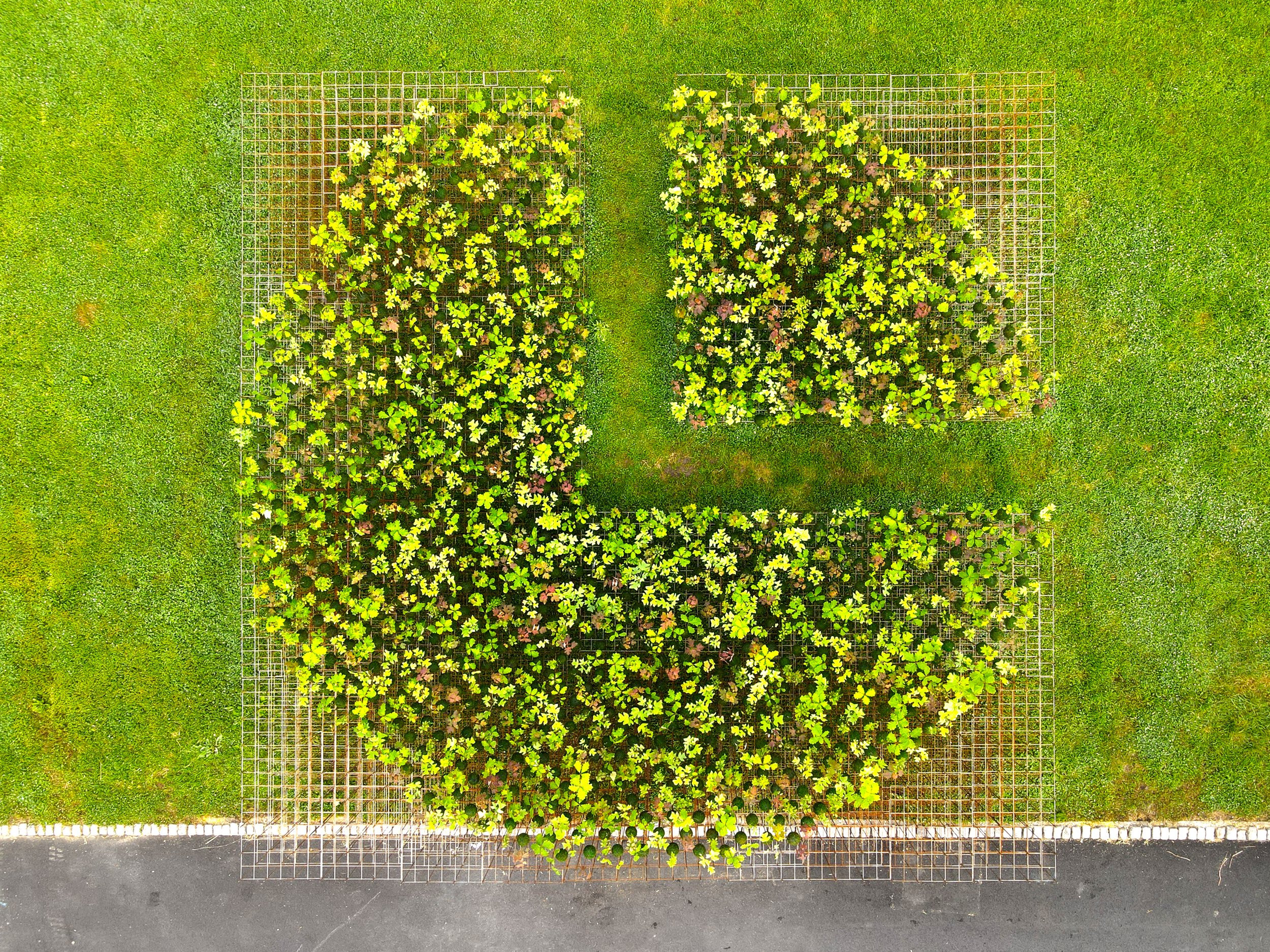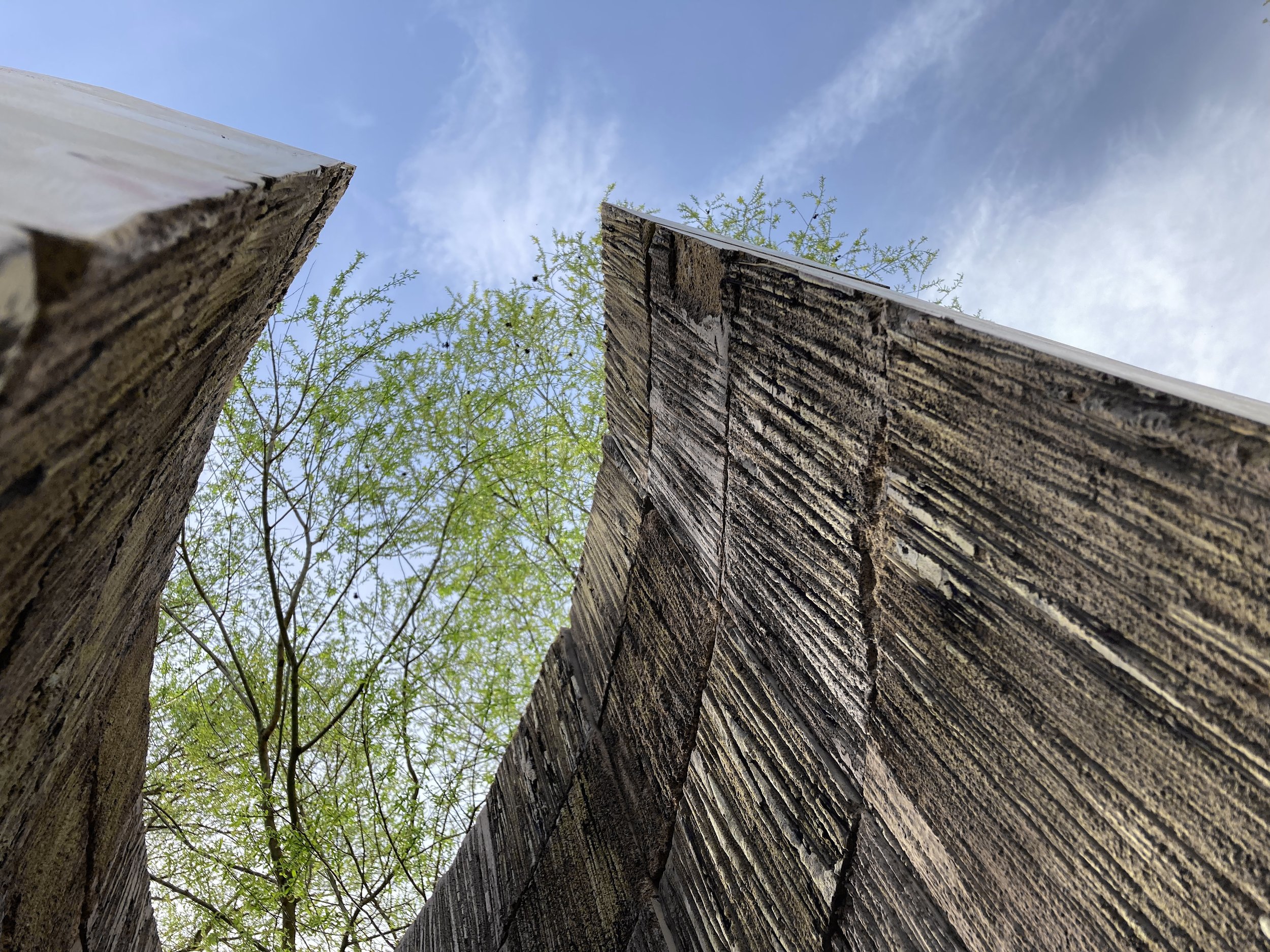Constant Motion: Nomad Studio’s Laura Santín on Seeking Beauty, Taking Action, and Reconnecting with Nature
Photo by Leila Jacue
By Gail Kutac
Laura Santín has practiced as an agronomist and a landscape architect for 22 years. After studying at the Polytechnic University of Madrid, she spent the early part of her career as a freelance landscape architect in Spain. In 2009, she and William Roberts founded Nomad Studio in New Orleans, followed by a move to New York City in 2012. Since 2020, their lives and work are shared between the US and Spain. Nomad is a professional and personal enterprise in which each project has an ultimate objective: to identify opportunities to bridge the disconnection between humans and nature through design and art. In her interview with Gail, Laura talks about keeping creativity alive, and an abundance of less, advising those just starting their career to be fueled by their passion.
GK: Tell me about your foundational years. Where did you grow up, and what did you like to do as a kid?
LS: I grew up in Madrid and other cities within the northern region of Spain. All my childhood can be summarized in three words: exploration, creation, and the outdoors. I spent my days either drawing, writing, playing Legos, inventing games and pulling everyone into them, exploring my surroundings, or literally in my own imagined world. Maybe there is a fourth word, motion, so even as a child, I was a nomad. I could not stop for too long on the same spot.
How did your interest in landscape architecture first develop? What did you learn about yourself in studying it?
My interest in landscape architecture developed while studying historic gardens at the Polytechnic University of Madrid. The garden as a form of art was my gateway into the profession. This passion for gardens was followed quickly by my relationship with plants and the appreciation of their company. From there, I have navigated through the different scales of the profession, always driven by my hunger to change how we interact with our environment and my constant necessity for beauty.
Kokedama Forest at the 2021 Philadelphia Flower Show, winner of the Governor's Trophy - Innovative/Unique Design, the PHS Gold Medal, and the Special Achievement Award - Garden Club Federation of PA. Photo by Nomad Studio.
Kokedama Forest at the 2021 Philadelphia Flower Show, winner of the Governor's Trophy - Innovative/Unique Design, the PHS Gold Medal, and the Special Achievement Award - Garden Club Federation of PA. Photo by Nomad Studio.
How did you get your start in the field?
While still studying, I started working in garden centers and as a trainee at the Design Office of the Department of Parks of Madrid, Spain. In the garden centers, I solidified my passion for plants and developed a hands-on knowledge of horticulture. In the Department of Parks of Madrid, my initial focus in landscape implementation and maintenance was redirected towards design, strategy, and conceptualization.
Walk me through your career steps chronologically, focusing on significant moments and key milestones.
After my experiences at the Department of Parks in Madrid and the garden centers, I worked as a gardener with a colleague, designing and implementing residential gardens, until I started a position as lead designer in a design-build firm that was focused on high-end residences in Madrid.
My drive for changing how we interact with our environment unsettled me, as it was clear to me that a larger scale was needed to create an impactful shift. In pursuing that pulsating need of taking meaningful action, I started taking courses in sustainable rural development. Always bouncing between planning and art, trying to balance my need to change the existing human-nature paradigm, and my intrinsic thirst for beauty, I immediately followed those seminars with my Master’s in Landscape Architecture.
Relentless in my search to positively contribute to the built environment, I landed in a company that was focused on rural development projects in the Spanish Pyrenees. It still stands as one of my most beloved professional experiences, as I spent many days doing fieldwork in the mountains, or following the lost traces of ancient Roman paths. But I ultimately ended up moving back to Madrid to start working for the European office of Mesa Design Group, a US-based landscape architecture firm where William Roberts was the Design Director. I worked on several projects in Spain, the Emirates, and the United States. Once again, one of the parts of my professional spectrum, design, was fulfilled, but the other – meaningful action for the environment – was neglected. A large development project was presented to the team. It was on the coast of Spain and was a monstrosity from an environmental standpoint. That was my definitive turning point. I resigned and started working again as a freelance landscape architect on projects in Spain.
“My core mission is to reconnect people and the environment, to create momentum towards an imperative global shift in our lifestyles. I work every day for that with the only tool I have: landscape architecture in all its scales.”
A couple of years later, in 2009, William Roberts and I decided to found Nomad Studio in the United States, structured as an unconventional design office, intentionally maintaining a small footprint, and supported by a diverse international group of professionals. We wanted to avoid being anchored to a specific location. Nomad has organically developed into a creative workshop devoted to innovative site-specific projects. Through our work with Nomad, we explore the interactions between art and landscape and their influences on society and the environment at different scales.
Recently, Nomad Studio embarked on a project that has been developing in my head for over fifteen years: Malayerba, a regenerative experimental agroforestry farm in Spain. Malayerba finally encompasses both beauty and meaningful impact. Malayerba has also incorporated hands-on work into the equation which is extremely rewarding and humbling.
Malayerba Farm, a regenerative landscape underway in Ribera del Duero, Caleruega, Spain.
Laura at Malayerba
Exculpatio, Entering the Void, reflections upon the unsustainability of sustainability. Hosted at Giardini della Marinaressa in Venice, Italy, and Global R&D Cemex Headquarters in Biel-Bienne, Switzerland. The installation was part of the exhibition “Personal Structures,” curated by the European Cultural Centre during the 2022 Venice Biennale.
Where are you in your career today?
I am at a point where the abundance of less is my mantra in all aspects of my life, including my career.
Looking back at it all, what have been the biggest challenges?
Personally, to keep my creativity alive and my spirit fed in order to be able to design, I need to be in a state of mind that is not aligned with a business mental frame. That is a challenge for an office that is determined to remain small.
“To design is a very intimate exercise of creation, so make sure you share that energy with the right team and for the right ethos.”
What have been the highlights?
A highlight is having the opportunity to work every day to foster awareness and contribute to creating an alternate future to “Hothouse Earth.”
Who are you admiring right now and why?
These days I am admiring the environmental activist Dr. Vandana Shiva, her courage and philosophical approach are absolutely inspiring; and the soil biologist Dr. Elaine Ingham, she has changed everything by deciphering the soil food web.
Green Varnish, a kinetic living sculpture at the Contemporary Art Museum of Saint Louis, 2015. Photo by David Johnson.
Green Air, a sculptural aerial garden at the Contemporary Art Museum of Saint Louis, 2016. Photo by Sarah Rothberg.
What is the impact you’d like to have in or on the world? What is your core mission?
My core mission is to reconnect people and the environment, to create momentum towards an imperative global shift in our lifestyles. I work every day for that with the only tool I have: landscape architecture in all its scales.
Finally, what advice do you have for those starting their career? Would your advice be any different for women?
Be fueled by passion. To design is a very intimate exercise of creation, so make sure you share that energy with the right team and for the right ethos. For women, I would add, do not relax in the fight to hold and increase the ground that our ancestresses gained for us. Unfortunately, we are far from having equality in many aspects.







